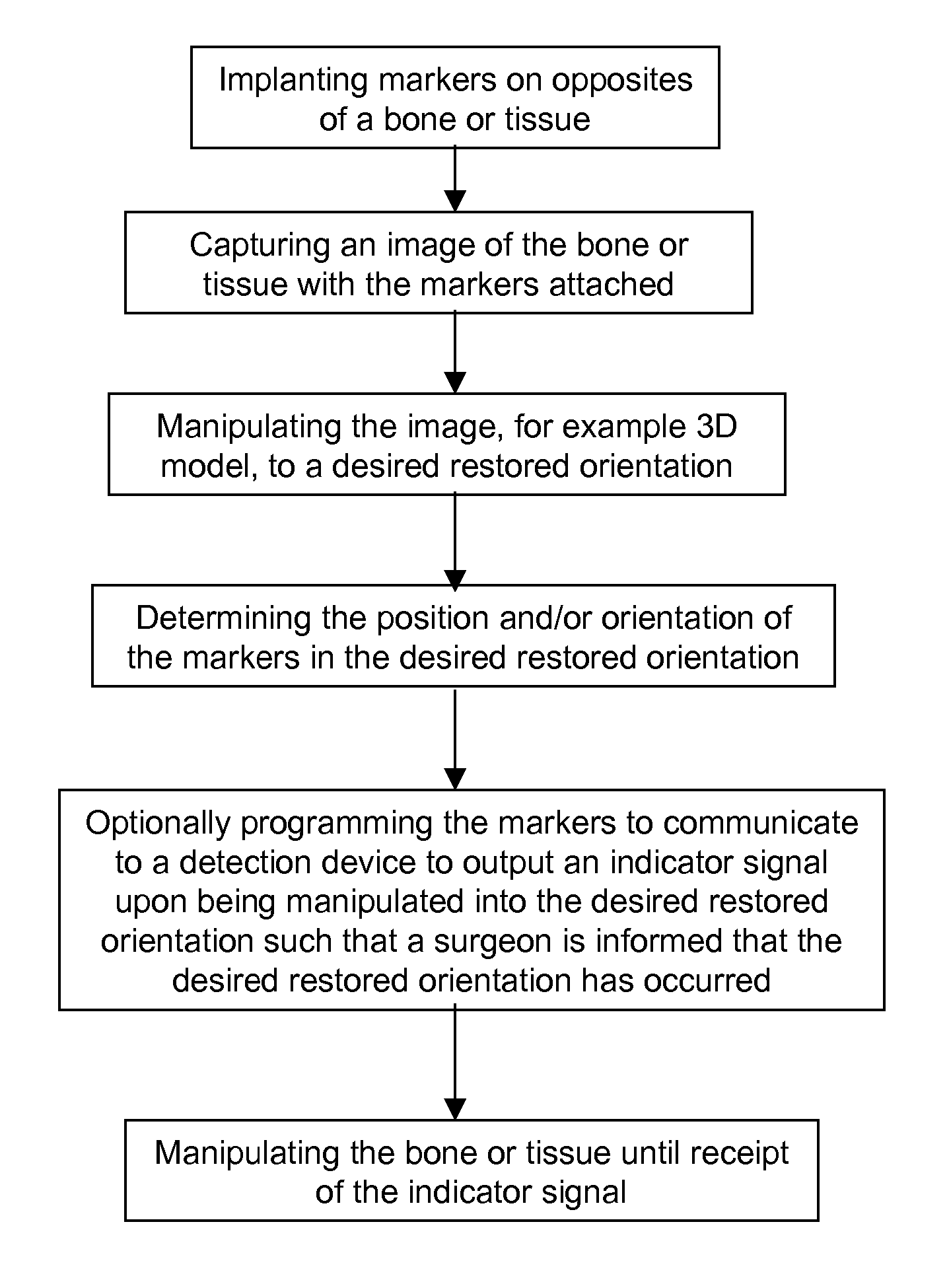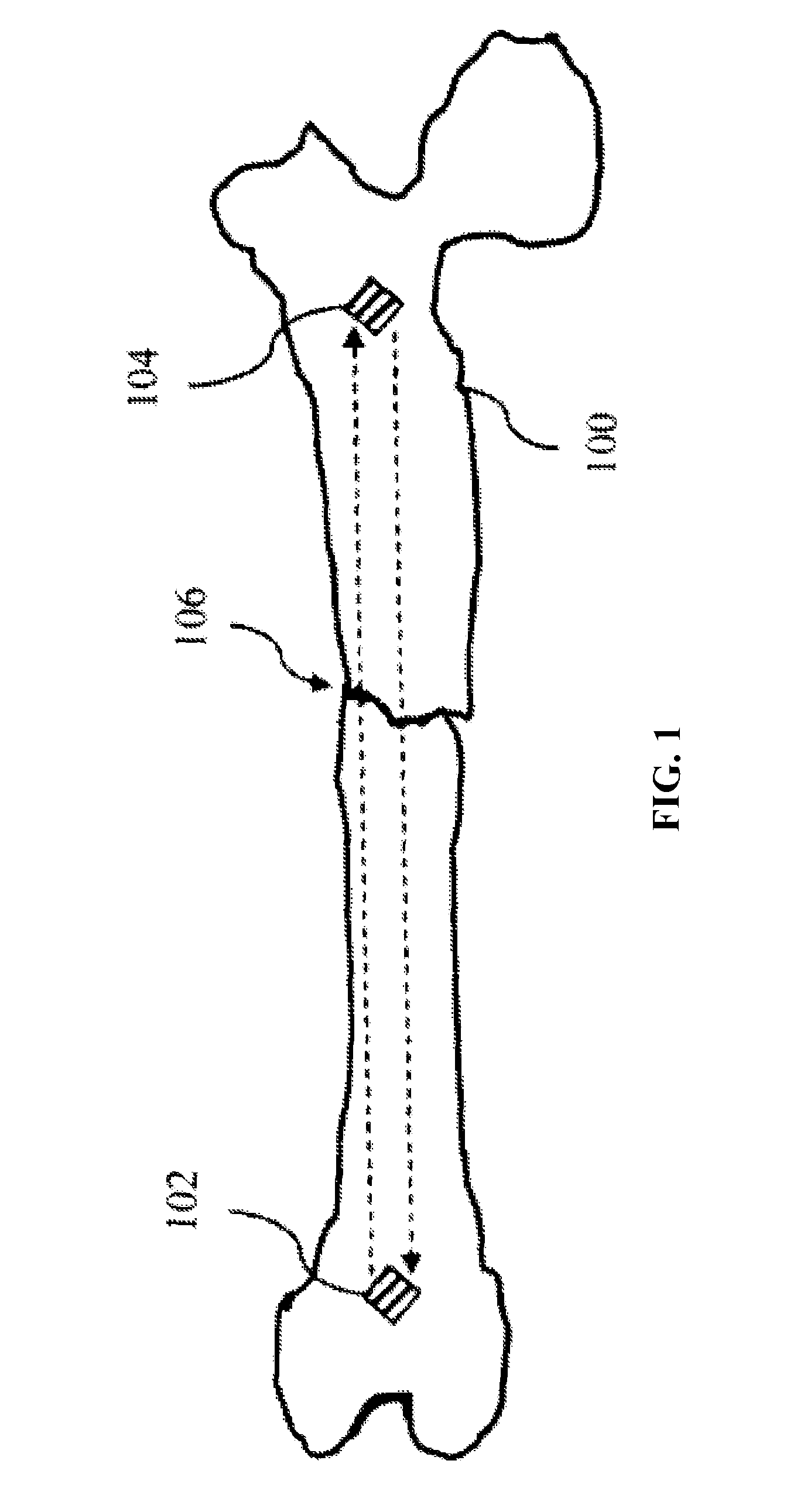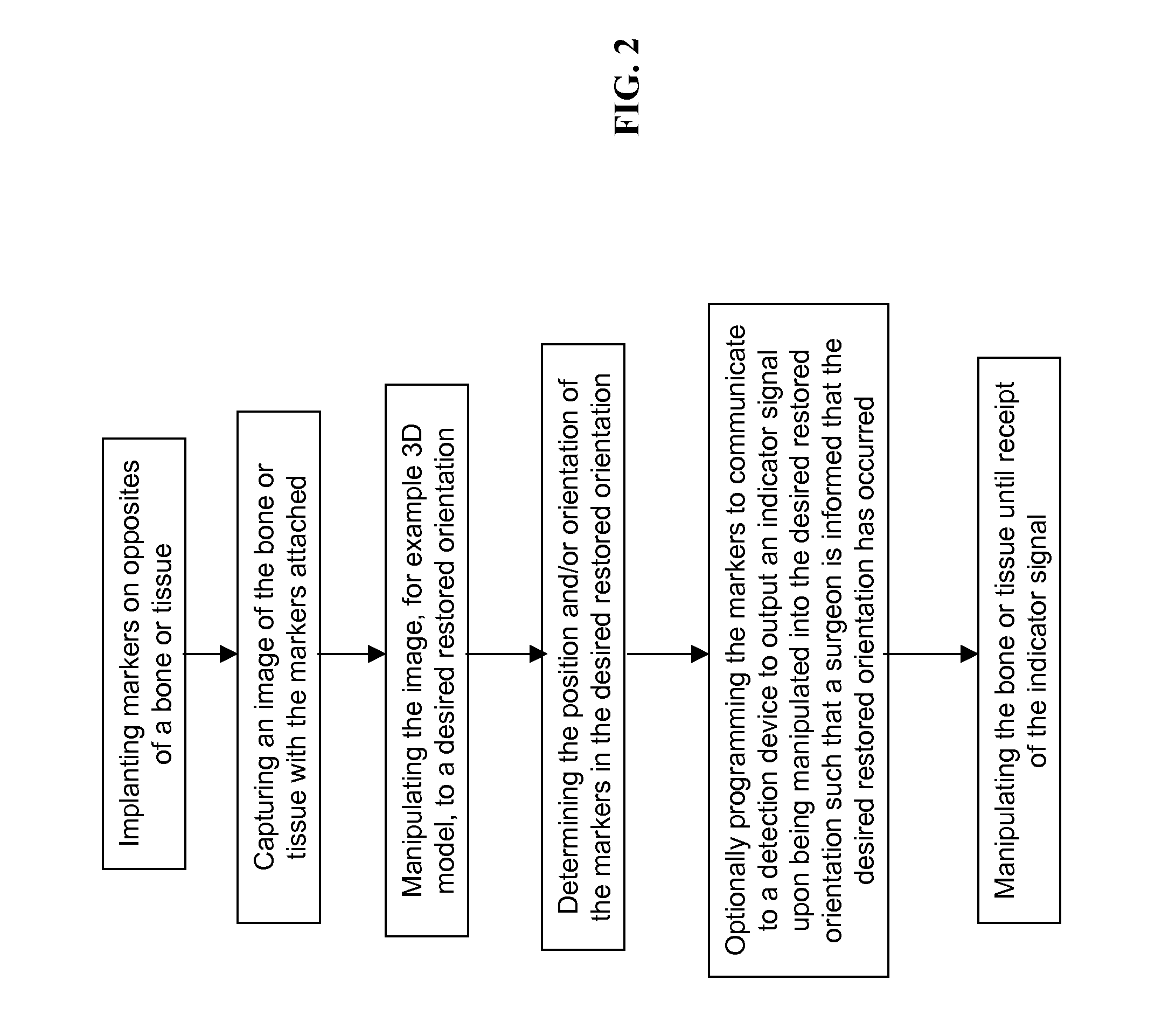Simulated bone or tissue manipulation
a bone or tissue manipulation and simulation technology, applied in the field of orthopaedics, can solve the problems of difficult use in the operating room, high cost and cumbersome equipment, and the most difficult part of fracture reduction, so as to improve the accuracy of bone or tissue manipulation
- Summary
- Abstract
- Description
- Claims
- Application Information
AI Technical Summary
Benefits of technology
Problems solved by technology
Method used
Image
Examples
Embodiment Construction
[0040]Certain exemplary embodiments of the invention will now be described with reference to the drawings. In general, such embodiments relate to an apparatus, system and / or method for performing and optionally verifying tissue, preferably bone, manipulation.
[0041]While the system and method of the present invention may be generally described as, generally shown as and may generally be used in connection with fracture fixation, it should be understood that the system and / or method for performing bone or tissue manipulation is not limited in use to repairing bone fractures. Rather, the system and / or method for performing bone or tissue manipulation may be used for manipulating bone, manipulating tissue, manipulating bone fragments caused by, for example, injury, deformation, degeneration, disease, etc. The system and / or method for performing bone or tissue manipulation is not limited to any particular type of fracture and, in fact, may be used even where no fracture exists. The syste...
PUM
 Login to View More
Login to View More Abstract
Description
Claims
Application Information
 Login to View More
Login to View More - R&D
- Intellectual Property
- Life Sciences
- Materials
- Tech Scout
- Unparalleled Data Quality
- Higher Quality Content
- 60% Fewer Hallucinations
Browse by: Latest US Patents, China's latest patents, Technical Efficacy Thesaurus, Application Domain, Technology Topic, Popular Technical Reports.
© 2025 PatSnap. All rights reserved.Legal|Privacy policy|Modern Slavery Act Transparency Statement|Sitemap|About US| Contact US: help@patsnap.com



